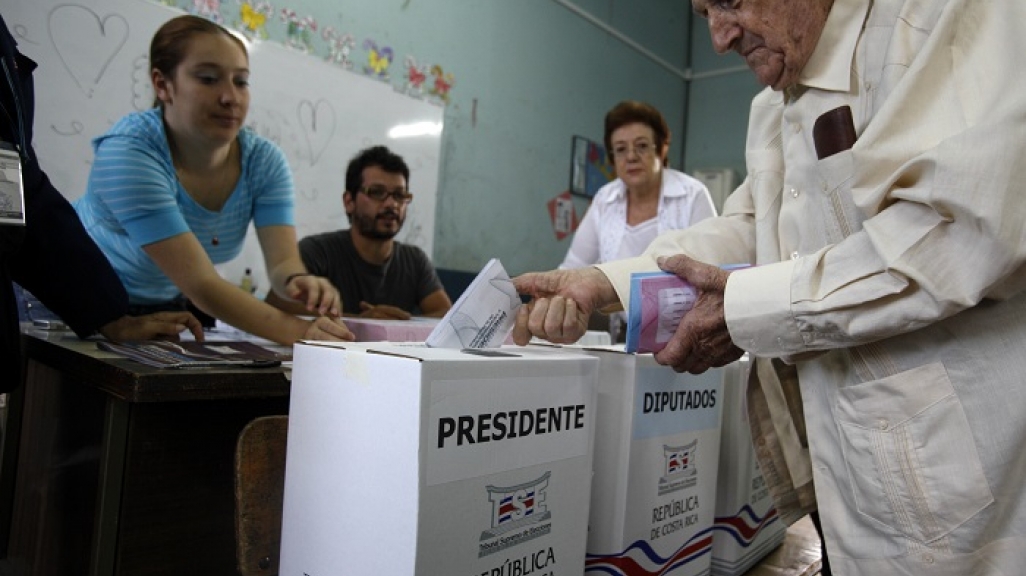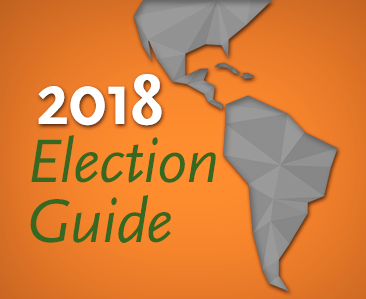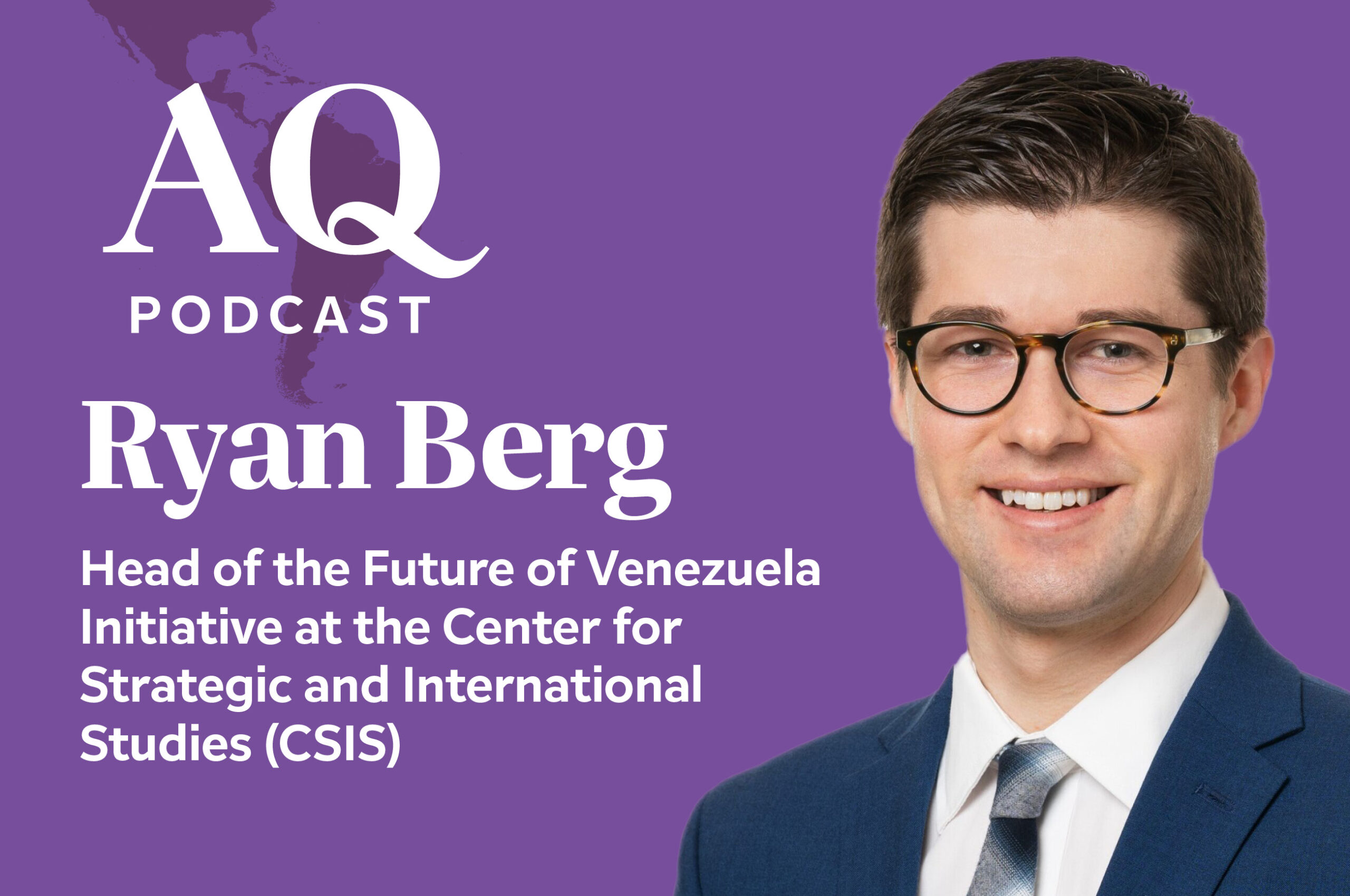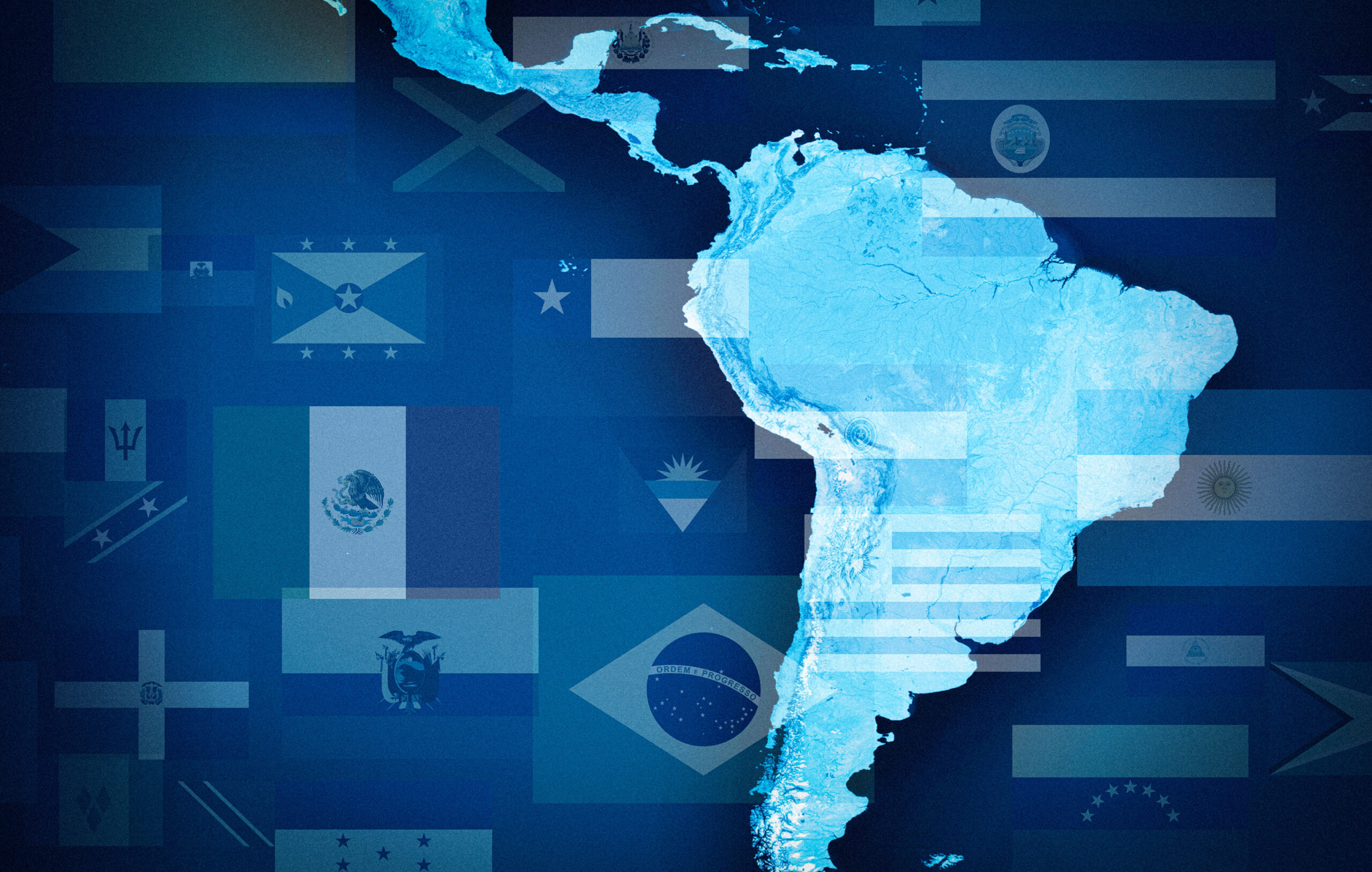Explainer: Costa Rica's 2018 Elections
Explainer: Costa Rica's 2018 Elections
Just before the February 4 first round, court rulings have stirred the social order in the traditionally conservative country.
Kicking off the first of Latin America’s six presidential elections in 2018 is Costa Rica. But ticolandia’s rosy international reputation belies what has been a topsy-turvy race to replace President Luis Guillermo Solís. With just over two weeks to go before the first vote, the country is still warily watching the fallout from a scandal that has rocked all three branches of government and much of the political establishment in 2017—known as the cementazo—as well as recent court rulings that have stirred the social order in the traditionally conservative country.
The scandal in particular, which revolves around some questionable changes to rules that allowed the essentially cost-free import of cement from China, has led to the arrest of six senior executives from the Bank of Costa Rica, a Supreme Court judge (and his attorney) suspended, several lawmakers from across party lines under internal investigation, and the president himself denying he granted preferential deals.
On February 4, Costa Ricans will vote in general elections for their next president, the first and second vice presidents, and 57 Legislative Assembly members. Presidential candidates must earn 40 percent of the vote to win outright in the first round; if no candidate reaches that, a runoff between the top two candidates will be held on April 1, which this year happens to be Easter Sunday. The president and vice presidents will be inaugurated on May 8.
The runoff is a relatively recent occurrence in Costa Rica, a country where 13 presidential elections in a row were decided in the first round up until the 2002 race went to a runoff, followed by the 2014 one. With more than a third of voters still undecided and a general lack of enthusiasm for the current field of candidates and the stalwart parties, the 2018 race is also expected to go to a second round.
More than 3.3 million Costa Ricans are registered to vote in 2018 out of the national population of around 5 million, per the TSE. This is only the second presidential election in which expats can vote, and the 2018 rolls include 50 percent more ticos registered to vote from abroad than there were two years ago. Although voting is mandatory in Costa Rica, there is no penalty for not participating. The 2014 presidential election saw 68.2 percent voter turnout, a figure that’s been on a generally downward trend from the late 1980s, when turnout hovered around 80 percent.
Costa Rica’s 57 Legislative Assembly members are not voted directly into office as individuals but rather through their parties, which submit candidate rosters to voters. The Legislative Assembly’s seats are distributed according to a formula that takes into account the number of votes received for each party and the population of the provinces, ranging from as many as 19 seats to represent San José to as few as four for Guanacaste.
The 2018 legislative election will also be marked by new measures to improve gender equality in Congress, made up of 20 women and 37 men for the 2014–2018 session. In previous years, parties were required to feature both men and women on their ballots, but tended to place men first in a policy known as “vertical parity.” The 2018 election marks the first time that “horizontal parity,” or the requirement that parties alternately list men and women first on their rosters, takes effect after a 2016 Supreme Elections Tribunal ruling.
Antonio Álvarez Desanti
National Liberation Party (Partido Liberación Nacional, PLN)
Website, Twitter, Facebook, YouTube.
The PLN is as old as the democracy is itself, and has won the presidency in nine out of the 16 elections, most recently with Laura Chinchilla (2010–2014). Álvarez, 59, who served as a minister during Óscar Arias’ first administration (1986–1990), finally secured his party’s nomination in 2017 in a closely fought primary and after a handful of scuttled bids dating back to 2001. Álvarez’s running mates are economist and Chinchilla Finance Minister Edgar Ayales and Victoria Gamboa Ross, who has a background in communications and NGO healthcare work.
Álvarez was twice elected to the Legislative Assembly, once in the 1990s and then again in the 2010s; during both terms, he served as president of the unicameral Congress. A Harvard-educated tax lawyer, he’s focused his career on a range of issues, including counter-narcotics and money laundering, as well as infrastructure and animal rights. He gained notoriety in 1991 when as the interior minister he tried to block a group of lesbians from entering the country for a regional conference—saying border agents could identify the women by short hair, pants, and traveling solo—an incident that led to physical threats and intimidation against women who ultimately made the trip. Two decades later, he said he’d evolved on the issue of LGBT rights and was more open-minded, but he’s struggled to find solid footing on social issues, saying last year that the issue of gay rights should be left to international courts, only to backtrack this January saying the Inter-American Court of Human Rights (IACHR) issued its ruling legalizing gay marriage in the region “behind the country’s back.”
The candidate is trying to staunch the losses he’s seen in CIEP polls, where his support has fallen from 25 percent last August to 14 percent in December, leaving him now neck and neck for second place and a ticket to the runoff. That said, an OPol poll from early January showed him in a statistical dead heat with Juan Diego Castro for first.
Juan Diego Castro
National Integration Party (Partido Integración Nacional, PIN)
Website, Twitter, Facebook, YouTube.
Dubbed a “Trump in the tropics,” Castro has become the talking point of the 2018 election as he harps on the political establishment, taking advantage of a deep anti-corruption mood in the country with the cementazo scandal playing out. His party, created in 1998, is much newer than other parties and so has shallower ties to the political establishment—and to the scandal. The high-profile lawyer, 62, promises to rebuild Costa Rica, donning not a red baseball hat but a blue construction hard hat. While Álvarez lists 15 issues among his platform, Castro just lists “Solutions” (which focus largely on infrastructure and corruption) and “Denounce!” which is a form for people to file instances of corruption. His message is apparently working with voters: he’s made the most gains of any candidate in polls in the latter half of 2017, rising from single-digit numbers in the summer to a first-place 18 percent in December, taking over the top spot from Álvarez the month before.
In his only previous public post, Castro became the only member of a cabinet to ever receive a “no confidence” vote from Congress—while Álvarez was president of the body, incidentally—when in 1995 as security minister he led more than 200 armed police officers to the congressional building in a move to pressure legislators. Though he is an avid social media user and regularly appears on television, the media are a frequent target of his critiques. When asked by one newspaper about testimony his late mother gave in 2012 that alleged, among other things, that her son was physically and verbally violent toward her, Castro lashed out at the reporter and also denied the claims. At an event on January 15, he said that he’d shutter the country’s top daily, La Nación, within his first year if elected.
Castro’s two running mates are accountant Cecilia Moreira and police forensic pathologist Mikel Vargas.
Rodolfo Piza Rocafort
Social Christian Unity Party (Partido Unidad Social Cristiana, PUSC)
Website, Twitter, Facebook.
In third place in polls is Rodolfo Piza Rocafort, 58, a former supplementary Supreme Court judge and human rights expert who’ll be on the ballot for the PUSC, the longtime rival to the PLN during Costa Rica’s bipartisan era. Piza was the PUSC’s last-minute candidate in the 2014 election as well, coming in fifth with 6 percent of the first-round vote. Prior to his presidential bids, he headed up the Costa Rica’s social security agency, known as La Caja, from 1998 to 2002. It was during his tenure that Congress approved a $32 million loan for the state agency to get new equipment from a Finnish company; years later, the press uncovered a bribery scheme tied to the deal that brought down both Piza’s successor and a former president, but Piza himself managed to escape being implicated in the scandal. His 2018 platform includes 16 proposals on everything from reducing informal jobs and poverty to fighting corruption and climate change.
Economist Edna Camacho Mejía and transportation expert Max Umaña Hidalgo are Piza’s running mates.
Dr. Rodolfo Hernández Gómez was the PUSC’s original presidential candidate in the last elections and was polling solidly in second place at 10 percent when he abruptly dropped out in October 2013 shortly after the official campaign season began, after a slew of resignations from his team and party infighting. The pediatrician, 67, is back in 2018 as the candidate for the Social Christian Republican Party (Partido Republicano Social Cristiano, PRSC), an offshoot of disaffected former PUSC members, and has risen steadily in CIEP polls from 1 percent in August to 8 percent in December.
The race’s youngest candidate is Carlos Alvarado Quesada, 37, of the Citizen Action Party (Partido Acción Ciudadana, PAC). A political scientist and journalist who studied in England and has also published three novels, Alvarado Quesada previously served in the Solís administration as human development and social inclusion minister, a role in which he led an ambitious anti-poverty plan, and later as labor and social security minister. After polling around 8 percent in August, shortly after securing his party’s nomination, by the end of 2017 he’d fallen to 5 percent.
While most candidates are on the regular media channels, Fabricio Alvarado Muñoz is on one not usually known for politicians: Spotify. Alvarado Muñoz, 43, is a contemporary Christian singer, journalist, and also deputy for the National Restoration Party (Partido Restauración Nacional, PRN). He’s also based his campaign almost exclusively on pushing back against an initiative to teach gender ideology in public schools. He was polling around 3 percent in December.
Rounding out the field is the Broad Front’s Edgardo Araya (1.5 percent in surveys) and the Libertarian Movement’s Otto Guevara, who, despite coming in fourth in the 2014 first-round vote, has watched his support in 2017 fall from 3 percent to 0.5 percent in one month, after being directly implicated in the cementazo. Five other candidates are officially running but have not registered significant support in polls.
Costa Rica tends toward more socially conservative positions. It’s the only country in the Americas with an official state religion (Roman Catholicism), and six in 10 ticos say they are content to keep it that way.
The IACHR decided two hotly debated issues for the country in recent years. The court, which is based in San José, ruled in 2012 that the country’s 2000 ban on in vitro fertilization (IVF) was illegal. It took three more years for the government to comply with that ruling, but President Solís eventually signed an executive decree legalizing the procedure in 2015. While public approval narrowly supports IVF, a majority of ticos (60 percent) were against recognition of same-sex partnerships when the IACHR ruled on January 9 that all signatories must recognize same-sex marriage and other LGBT rights. The country’s first same-sex wedding is set to take place January 20 in the capital. Though social issues have yet to land among top voter concerns in polls, an Education Ministry plan to include the issue of gender ideology in the national curriculum has galvanized conservative voters, who protested against the measure in San José in December, an event attended by Alvarado Muñoz, Hernández, and Piza. (Guevara also opposes the proposal.)
After years of steady bipartisan contests between the PLN and the PUSC, the 2014 race was anything but typical. Solís, who ran on the PAC ticket, stunned observers when he won that year’s first round with 31 percent of the vote, after barely breaking double digits in polls up until the month prior. Then, just a month before the runoff vote, Solís’ challenger, San José Mayor Johnny Araya, dropped out of the race after polls showed him down by 44 points. Solís’ win was the first time a candidate not from the PLN or PUSC took the presidency in more than a half century.
Though Solís led the charge on both legalizing IVF and same-sex marriage, his popularity has never had a net positive during his four years in office according to CIEP polling, and took a nosedive in 2017 after the cementazo scandal broke. The country has notched around 4 percent GDP growth for all of his years in office. Unemployment, however, nearly doubled under Chinchilla’s term and has only come down nominally since, hitting 8.5 percent in 2017. Presidents in Costa Rica cannot serve consecutive terms, per the Constitution; the earliest Solís could run again is in 2026.
After a two-day debate January 7 and 8, the first with all the presidential contenders, a final debate is scheduled for January 30—but not all of the candidates have received their invitations yet.
- La Nación’s election coverage
- Seminario Universidad's political coverage
- The Tico Times’ election coverage and coverage by Alvaro Murillo in particular
- The Costa Rican Supreme Electoral Tribunal’s site
Julia d’Amours contributed to this report.










